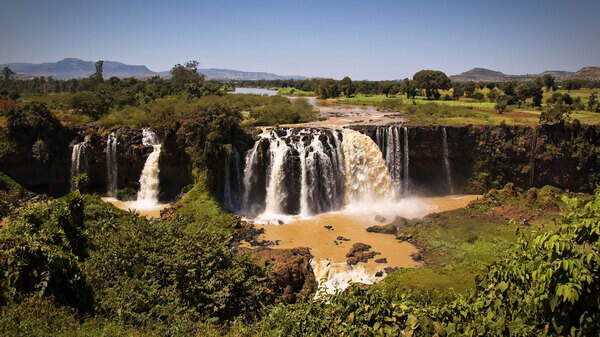Bulgaria And Romania Set For Monumental Tourism Surge With Addition To Schengen Visa Zone Emerging To 31 In Europe
Reading Time: 4 minutes Bulgaria and Romania join the Schengen Zone, enhancing travel and posing challenges at land borders, while expanding tourism opportunities. The post Bulgaria And Romania Set For Monumental Tourism Surge With Addition To Schengen Visa Zone Emerging To 31 In Europe appeared first on Travel And Tour World.


Bulgaria and Romania join the Schengen Zone, enhancing travel and posing challenges at land borders, while expanding tourism opportunities.
With their recent addition to the Schengen Visa Zone, Bulgaria and Romania are poised for a monumental surge in tourism. This pivotal change facilitates easier access for travelers, broadening the appeal of these countries’ rich cultural heritage, diverse landscapes, and historical sites. Now part of a collective of 31 European countries where cross-border travel is made more accessible, both nations expect an influx of tourists eager to explore the uncharted beauties of Eastern Europe. This integration not only simplifies travel but significantly boosts the local economies, marking a new chapter in their tourism narratives.
Bulgaria and Romania have now joined the Schengen zone, a pivotal step in their journey towards deeper integration with Europe that began over a decade ago. As of this past Sunday, this inclusion allows for unrestricted air and sea travel across the zone, although land travel is still subject to border checks due to an Austrian veto. This decision is based on concerns regarding the influx of asylum seekers.
This development has sparked celebration among many, but truck drivers are experiencing increased hardships. They face extended delays at borders and significant financial burdens. Romanian road transport unions, including the UNTRR, are calling for immediate action to mitigate these detrimental impacts on truckers.
The inclusion of these two countries expands the Schengen zone to 29 members, which includes several EU countries as well as Switzerland, Norway, Iceland, and Liechtenstein. Romania is set to apply Schengen regulations at 17 airports and four sea ports, with Otopeni airport in Bucharest acting as a central hub.
Despite these advances, challenges such as border security and illegal immigration persist. Both nations are determined to achieve full Schengen integration by the end of the year, although Austria’s restrictions currently limit them to non-land travel routes. Notably, Croatia became the 27th member of the Schengen zone in January 2023, joining before Bulgaria and Romania despite their later EU entry.
The new arrangement means that air and sea travelers into Bulgaria and Romania can enter with just their Schengen visas, while those traveling by road will require additional paperwork.
Despite these obstacles, leaders in both Sofia and Bucharest remain committed to forging ahead. Romanian Interior Minister Catalin Predoiu emphasizes the goal of finalizing integration, including land borders, by 2024. As Bulgaria and Romania navigate these challenges, they mark significant progress towards a more integrated Europe.
Bulgaria offers a captivating blend of natural beauty, historical landmarks, and vibrant cultural experiences that make it a compelling destination for tourists. From the sandy beaches along the Black Sea coast to the serene vistas of the Balkan Mountains, Bulgaria appeals to both adventure enthusiasts and those seeking relaxation. The country is also famed for its rich heritage, with treasures like the Rila Monastery and the ancient city of Plovdiv, which boasts Roman ruins and picturesque old town areas. Additionally, Bulgaria’s ski resorts such as Bansko and Borovets provide excellent winter sports opportunities, making it a year-round tourist spot.
Romania is equally rich in tourist attractions, featuring a diverse landscape that ranges from the dense forests of Transylvania to the expansive Danube Delta. It’s particularly known for its medieval castles, including the legendary Bran Castle, often associated with the Dracula myth. Cities like Bucharest offer a dynamic urban experience with a mix of architectural styles, bustling nightlife, and rich history. Meanwhile, the painted monasteries of Bucovina and the wooden churches of Maramures showcase Romania’s unique religious artistry and deep spiritual heritage. For nature lovers, the Carpathian Mountains provide a stunning backdrop for hiking, wildlife watching, and exploring rural traditions that have remained largely unchanged for centuries.
Top Five Tourist Spots in Bulgaria
- Rila Monastery: Nestled in the Rila Mountains, this stunning monastery is not only a key religious site but also a masterpiece of Bulgarian Renaissance architecture, featuring intricate frescoes and a historic museum.
- Plovdiv Old Town: Known as one of the oldest cities in Europe, Plovdiv’s Old Town is famous for its Roman theater, colorful 19th-century mansions, and winding cobblestone streets, offering a rich blend of history and culture.
- Nessebar: Situated on a small peninsula on the Black Sea, Nessebar is notable for its medieval churches and wooden houses, alongside beautiful sea views, making it a perfect blend of history and seaside relaxation.
- Seven Rila Lakes: This series of glacial lakes located in the northwest Rila Mountains is a popular hiking destination, offering spectacular natural scenery and panoramic views at every turn.
- Varna Archaeological Museum: Located in the seaside city of Varna, this museum holds some of Bulgaria’s most important archaeological finds, including the oldest gold treasure in the world, dating back to the Varna Necropolis.
Top Five Tourist Spots in Romania
- Bran Castle: Often associated with the Dracula legend, Bran Castle is perched atop a hill in Transylvania and offers a mix of myth and history with dramatic architecture and stunning surrounding landscapes.
- Peles Castle: Located in Sinaia, this castle is a stunning example of Neo-Renaissance architecture with its ornate details and lavish interiors, set against the backdrop of the Carpathian Mountains.
- Danube Delta: A UNESCO World Heritage site, the Danube Delta is the second largest river delta in Europe, renowned for its biodiversity, including numerous bird species making it a haven for nature enthusiasts.
- Sighisoara: This well-preserved medieval town is famous for its colorful buildings, cobbled streets, and the historic Clock Tower. The birthplace of Vlad the Impaler, it offers a fascinating glimpse into medieval Transylvania.
- Corvin Castle: One of the largest castles in Europe, located in Hunedoara, it is known for its Gothic-Renaissance architecture, towering spires, and rich history, making it a must-visit for anyone fascinated by medieval fortresses.
The post Bulgaria And Romania Set For Monumental Tourism Surge With Addition To Schengen Visa Zone Emerging To 31 In Europe appeared first on Travel And Tour World.
















